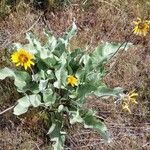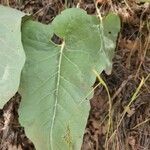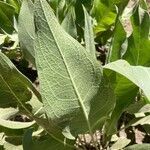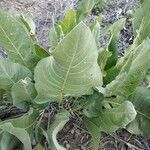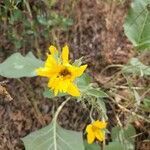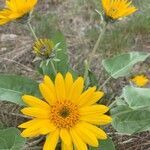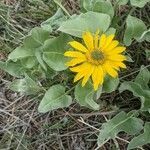A herb. It grows in clumps. It grows 20-60 cm high and spreads 30-45 cm wide. There is a ring of leaves at the base. These are coarse and arrow shaped. They are 30 cm long. They are downy above and white and woolly underneath. The flowers are daisy like. They have deep yellow centres and paler on the outside. They occur singly at the end of long stalks. They are 5-7.5 cm across. The fruit is a dry achene.
